 |
A tidal creek at low water in the peat swamps near Matang,
near Kuching, Sarawak.
photo Lo |
|
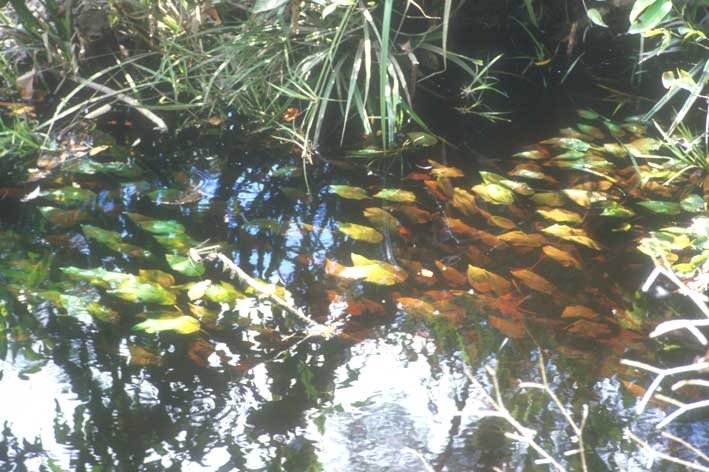 |
C. cordata var. grabowskii growing in the swamps near Matang.
coll. CK 68
photo Kettner
|
|
 |
Biotope near Pelaihari, SE of Banjarmasin, Kalimantan. Spathe with a pure yellow limb.
photo Hanrieder |
|
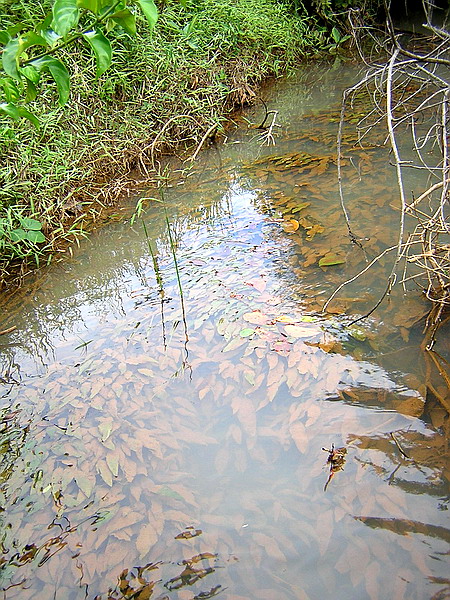 |
A small stream with a big patch of C. cordata var. grabowskii south east Kalimantan.
coll. B-05
photo Budianto
|
|
| |
|
|
|
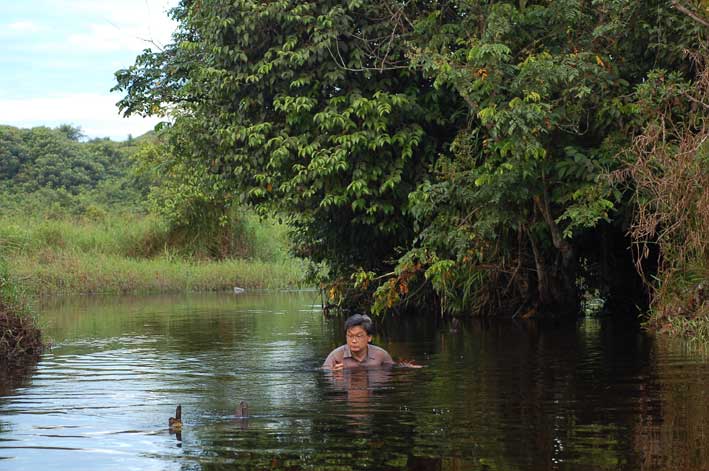 |
A small river with slow running water near Sampit. The plants grow deep in the mud
coll. B-03
photo Wongso
|
|
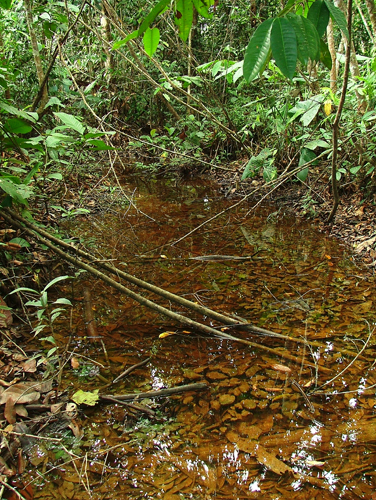 |
A locality near Lundo in Sarawak
photo Lo
|
|
 |
Near Sampit, central Kalimantan.Note the very dark limb of the spathe.
photo Waser
|
|
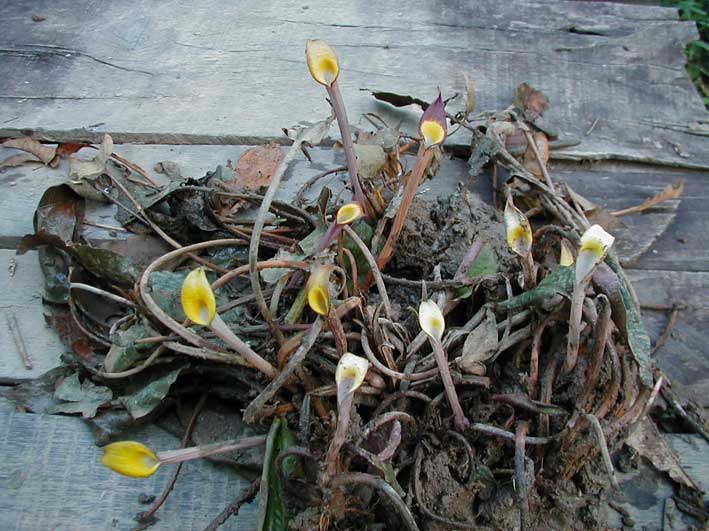 |
South of Banjarmasin airport .Several plants from one locality showing variation in the limb. The 'white' ones probably grew in full sun.
coll. SW-KL0305
|
|
| |
|
|
|
 |
Cultivated submerged in beech tree litter. The limb of the spathe a bit brownish
coll. TI B-06, cult. B 1003
photo Bastmeijer
|
|
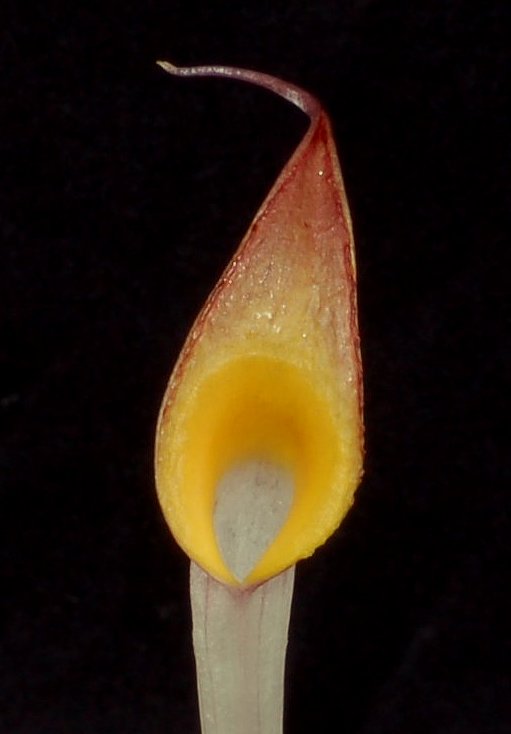 |
More variation in the colouring of the limb. Note the the somewhat swollen collar zone (plant from the type locality, see below)
coll. TI A-04G, cult. TI
photo Idei
|
|
 |
A rather short limb of the spathe, also a bit darker and more rough.
coll. YS I-PASC1, cult. B962
photo Bastmeijer
|
|
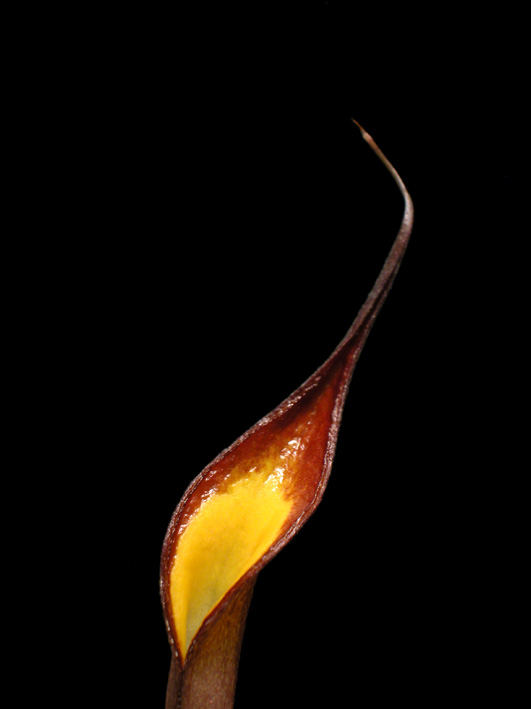 |
A long, smooth, red limb of the spathe.
coll. SW-KL0703, cult. B1178
photo Bastmeijer
|
|
| |
|
|
|
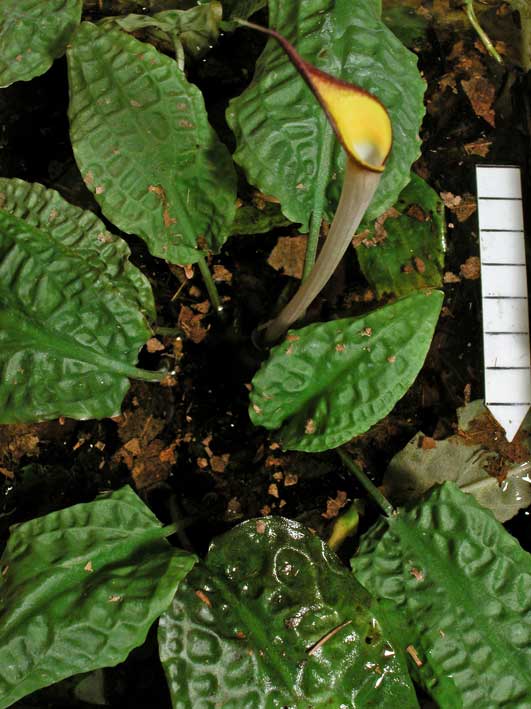 |
Strong bullated leaves are rather rare in C. cordata var. grabowskii but at a few localities they were found. In cultivation they maintain this character.
coll. Idei Kubu-B, cult.B 1002
photo Bastmeijer
|
|
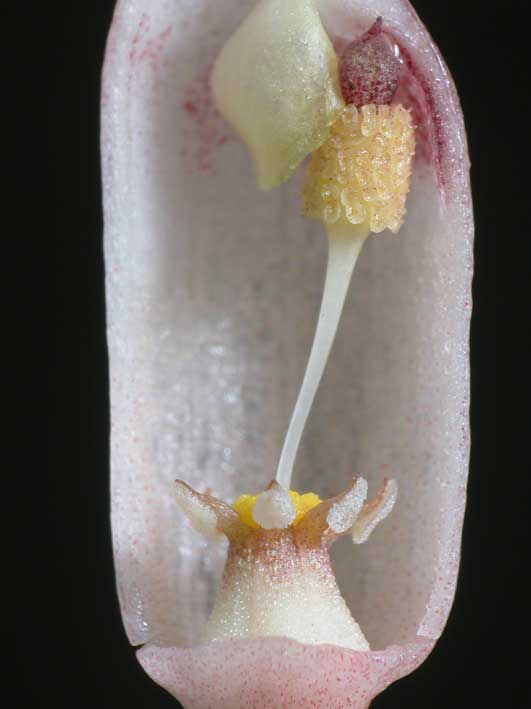 |
Longitudinal section of the kettle. Only the top of the kettle is reddish.
coll. TI A-05, cult.B1007
photo Bastmeijer
|
|
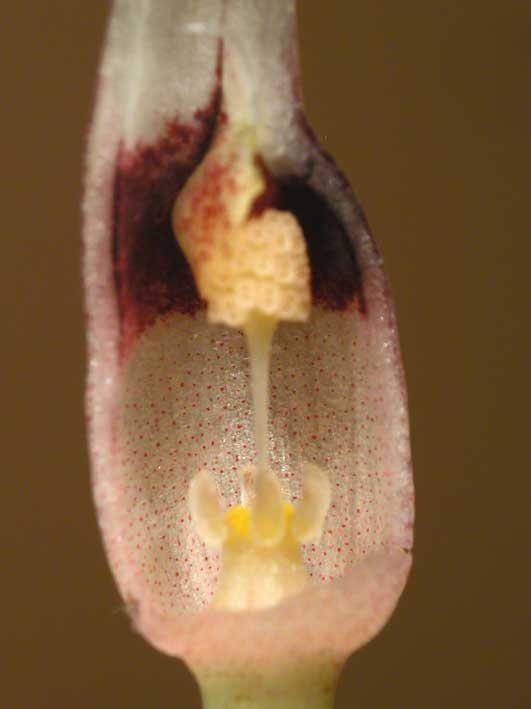 |
Idem. This is more normal, a dense red zone in the upper part of the kettle. The lower part of the kettle wall is densely covered with purple-red dots.
coll.
YS I-SAKK2, cult B969
photo Bastmeijer
|
|
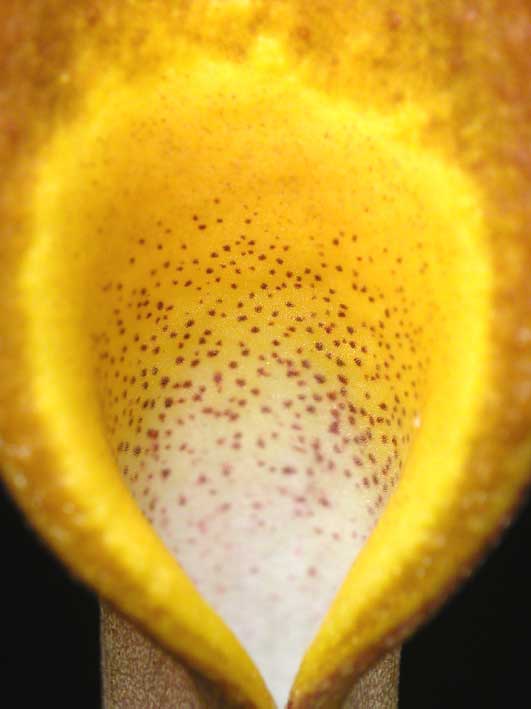 |
Very often the throat is more or less densely covered with red dots.
coll. SW KL0305-4, cult. B 1035
photo Bastmeijer
|
|
| |
|
|
|
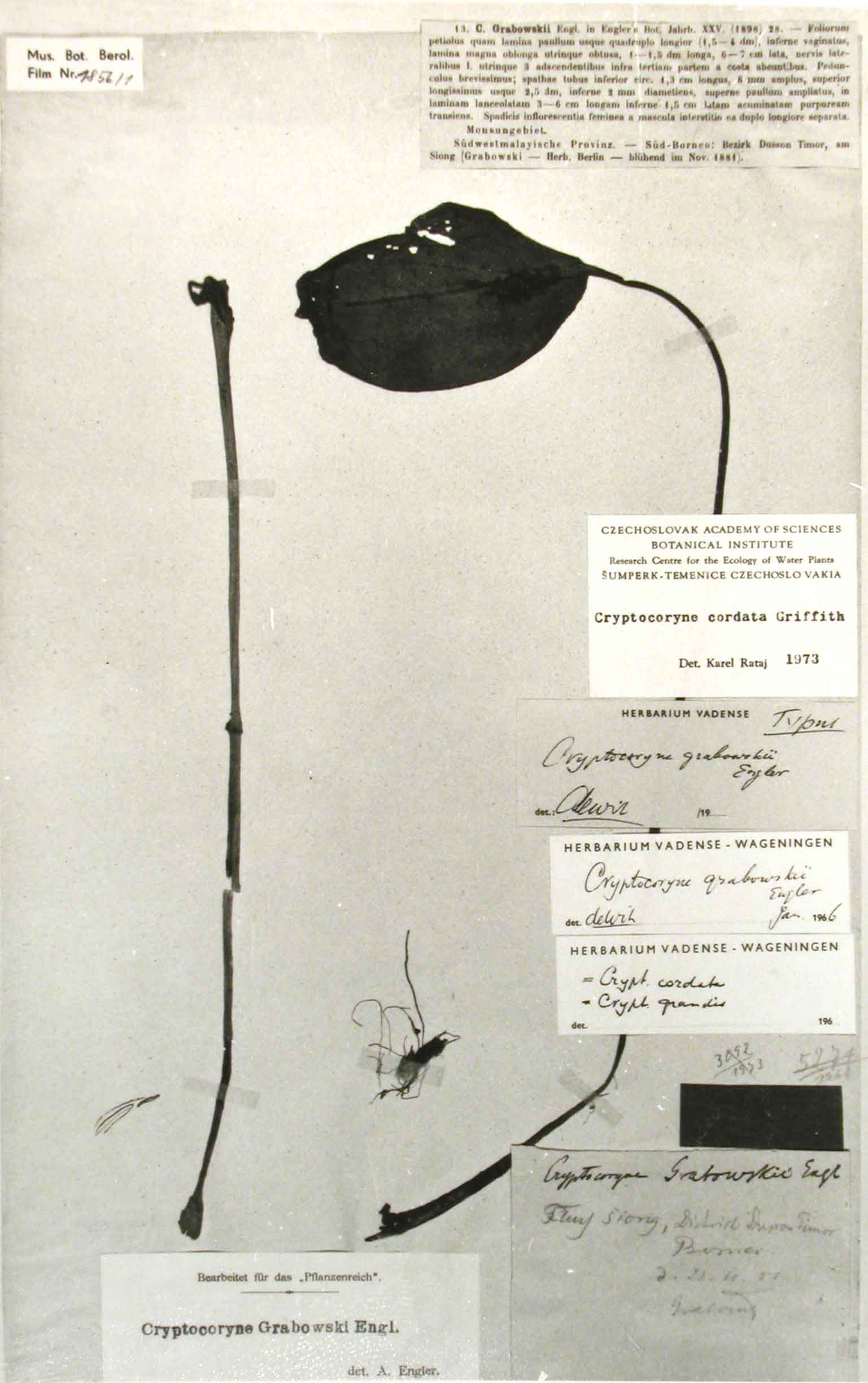 |
The typus of C. cordata var. grabowskii was heavy damaged at the end of WW2, making it difficult to interpret.
coll. Grabowski s.n. (1881)
herbarium Berlin
|
|
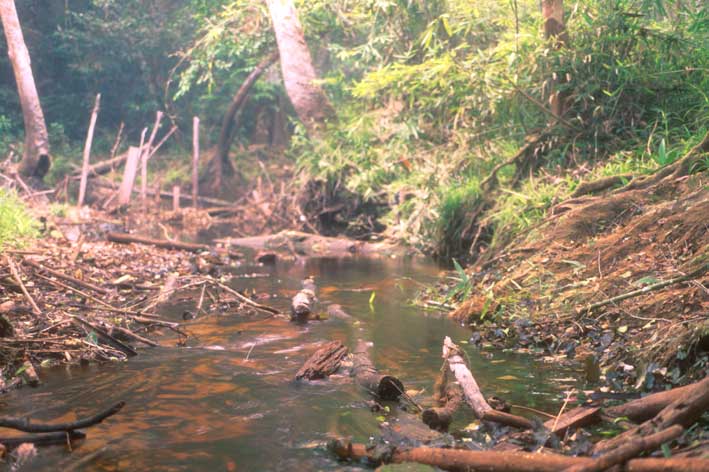 |
The habitat - or what is left - of C. cordata var. grabowskii at the type-locality was rediscovered by Idei..
coll. TI A-04G
photo Idei
|
|
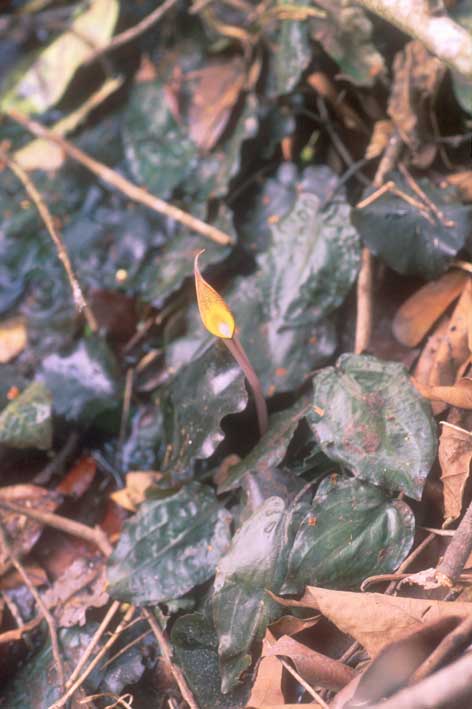 |
The plants were still there and flowered.
coll. TI A-04G
photo Idei
|
|
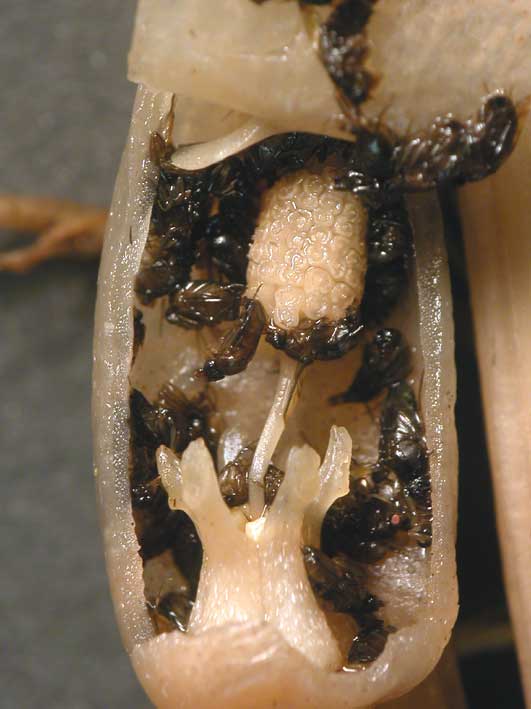 |
Pollinator flies captured in the kettle (note the closed valve). Alcohol preserved spathe.
coll. TI A-04G
photo Bastmeijer
|
|
| |
|
|
|
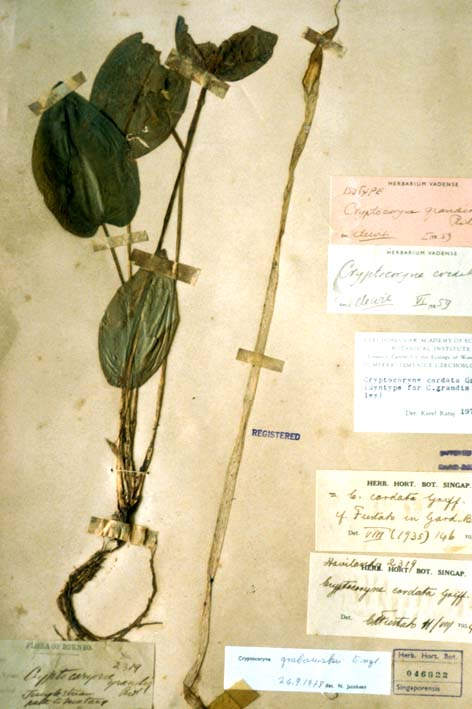 |
Herbarium sheet of C. cordata var. grabowskii (as C. grandis) collected near Matang, Sarawak. Note the very long tube.
Coll. Haviland 2319
herbarium Singapore |
|
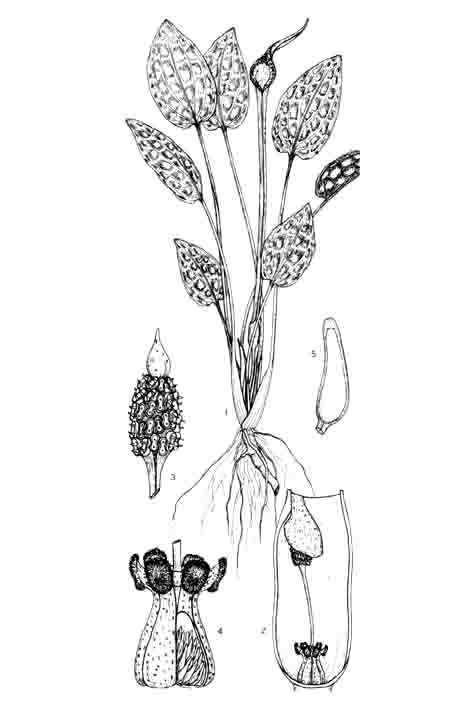 |
Drawing of C. cordata var. grabowskii in de Wit (1990).
Coll. Korthals, Borneo, without specific locality, probably Banjarmasin (herbarium L).
drawing Ike Zewald
|
|
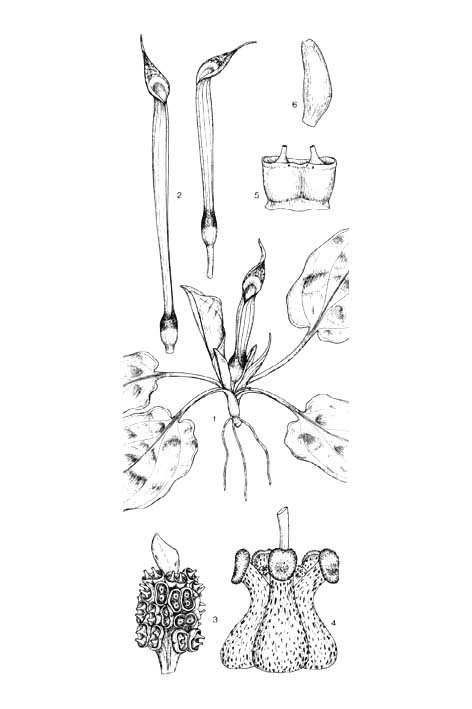 |
Drawing of the type of C. cordata var. zonata in de Wit (1990). This plant has all characters of C. cordata var. grabowskii, only a bit smaller.
coll. Key s.n.
drawing Ike Zewald |
|
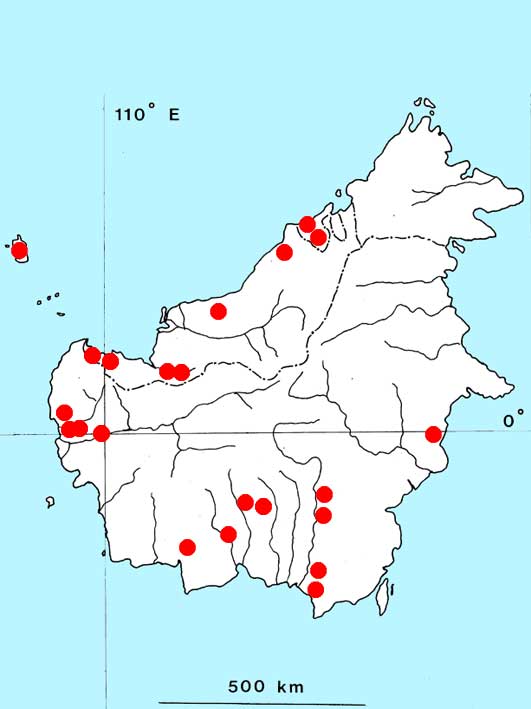 |
Known distribution of C. cordata var. grabowskii.
|
|
| |
|
|
|
There is lot of variation found in Cryptocoryne cordata var. grabowskii, in leaf size and form, smooth to bullate, bright green to brownish in a continuous range. The spathe has usual a long tube but also short tubes are known. The limb may vary from bright yellow to dark purple, the throat with or without red dots. The kettle almost white inside to with a deep red zone in the upper part. That means that the 'typical' C. cordata var. zonata nicely fits in this range.
Cultivation.
Cryptocoryne cordata var. grabowskii can be
cultivated successfully emerged or submerged on leaf litter from the beech tree Fagus sylvatica, but more trees will be appropriate for that. The soil is vary acid and may go below pH 4. It is impossible to cultivate it in hard water as is usual for the aquarium.
See the cordata-group for more comparison and also for literature.
Updated May 2014 |
|